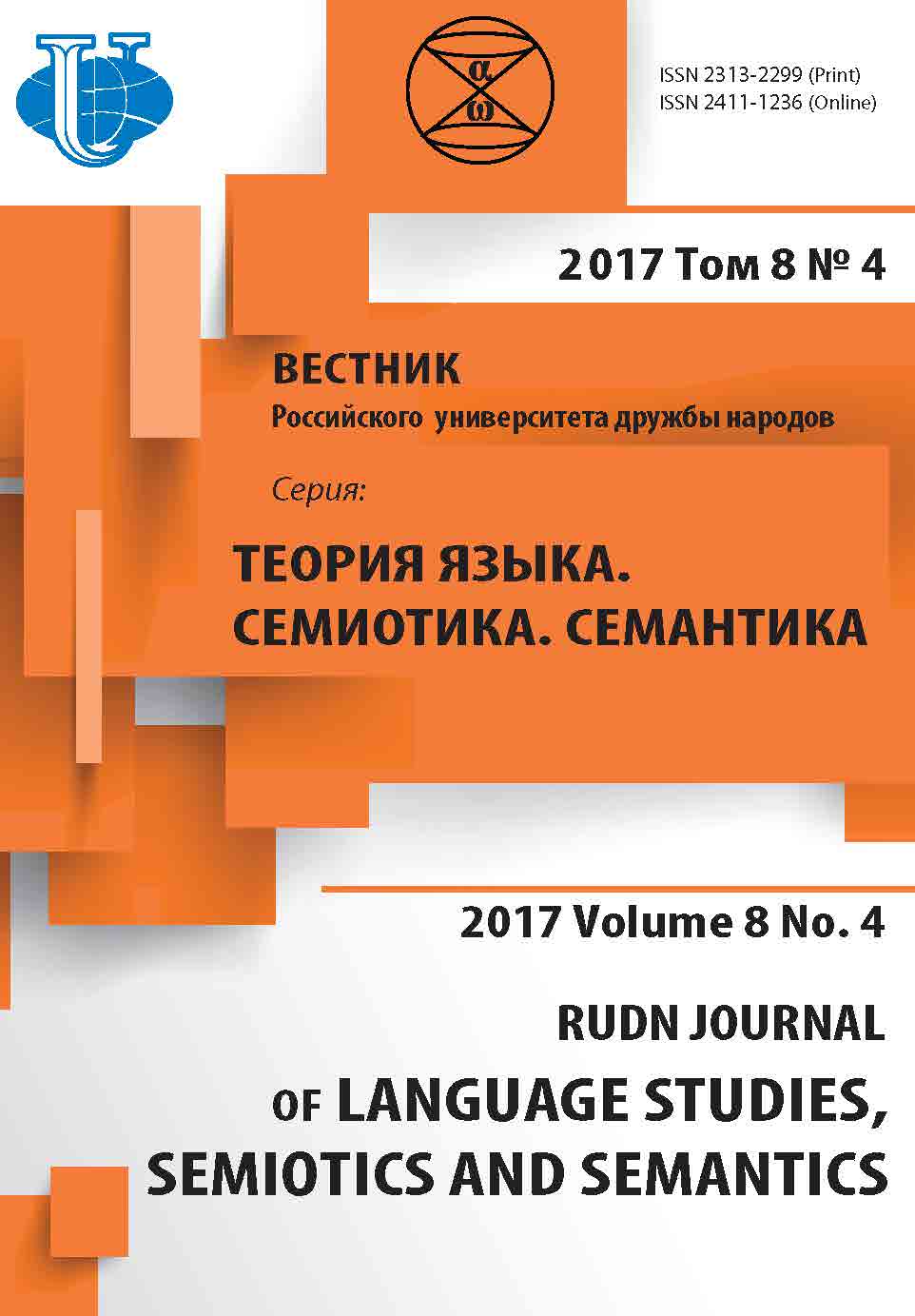CATEGORIZATION OF LANGUAGE NOMINATIONS IN THE SOCIOLINGUISTIC SPACE OF THE PEOPLE’S REPUBLIC OF CHINA
- Authors: Moskvitcheva SA1, Li Xue -1
-
Affiliations:
- RUDN University
- Issue: Vol 8, No 4 (2017)
- Pages: 1103-1117
- Section: ARTICLES
- URL: https://journals.rudn.ru/semiotics-semantics/article/view/17990
- DOI: https://doi.org/10.22363/2313-2299-2017-8-4-1103-1117
- ID: 17990
Cite item
Full Text
Abstract
The article generally presents the languages' sociolinguistic categorization of the people’s Republic of China. The languages' Socio-political nomination of any region are derived from the factors such as social, political, historical, ethnic and linguistic system. The result is to create terminology not with ontological, but with discursive nature. Therefore, in each special case it created a kind of category structure with a unique semantic connections between categories, which leads to a fundamental non-equi-valence of the meanings behind similar nominations in different languages and cultures, which make difficult to adequate translation and transmission of these meanings. The article analyzes prototypical nominations of languages within Sino-Tibetan language space, studies the meanings behind them, shows their specificity in comparison with other language spaces. The main attention is paid to the nominations designating the standard Chinese language in its variants, dialects and national minorities languages. The terminological field of nominations is regarded as fundamentally discursive, that is, as a projection of different types ideologies transforming ontological entities.
About the authors
S A Moskvitcheva
RUDN University
Author for correspondence.
Email: moskvitcheva@mail.ru
Moskvicheva Svetlana Alekseevna, PhD, Associated Professor, Associated Professor of the of General and Russian Linguistics Department of the Philological Faculty at Russian Peoples Friendship University (RUDN University); scientific interests: sociolinguistics, typology of minority languages, language representation, semantics, language theory
117198 Moscow, str. Miklukho-Maklay, 6, Russian Federation- Li Xue
RUDN University
Email: evelynlee@mail.ru
Li Xue, graduate student of the General and Russian Linguistics Department of the Philological Faculty at the Russian University of Peoples Friendship; scientific interests: terminology, taxonomy, lexicology, semantics, typology of minority languages
117198 Moscow, str. Miklukho-Maklay, 6, Russian FederationReferences
- Zavyalova, O.I. (1996). Dialects of the Chinese language. Moscow: Naunaya kniga. (In Russ.).
- Zavyalova, O.I. (2010). The big world of the Chinese language. Moscow: Vostonaya literatura. (In Russ.).
- Iskhakov, R.L. (2016). The principle minzu zhuyi and legitimization of national statehood of China // Materials of IX International scientific-practical conference. Ekaterinburg: Ural Federal University first Russian President B.N. Eltsin. pp. 262—279. (In Russ.).
- Serdyuchenko, G.P. (2008). The Chinese character and its reform. Moscow: Vostonaya literatura. (In Russ.).
- Titarenko, M.L. (ed.) (2008). Spiritual culture of China: encyclopedia. Vol. 3. Moscow: Vostonaya literatura. (In Russ.).
- Busquet, J., Platon, S. & Viaut, A. (ed.) (2014) The definition and categorization of minority languages in Western Europe. Pessac: Maison des sciences de l'homme d'Aquitaine. (In French.).
- Constitution of the People’s Republic of China (2004). [中华人民共和国宪法]. Law Press [法 律出版社].
- Guo Xi (2004) Chinese sociolinguistics (revised and enlarged edition) [郭熙 中国社会语言学 (增订本)]. Zhejiang University Publishing House [浙江大学出版社].
- John De Francis (1984).The Chinese Language: Fact and Fantasy. University of Hawaii Press.
- Law of the People’s Republic of China on Regional National Autonomy (2005). [中华人民共和 国民族区域自治法]. Publishing House of Minority Nationalities [民族出版社].
- Law of the People’s Republic of China on Resident Identity Cards (2003) [中华人民共和国居民 身份证法]. Standing Committee of the National People’s Congress [中华人民共和国全国人民 代表大会常务委员会].
- Law of the People’s Republic of China on the Standard Spoken and Written Chinese Language (2001) [ 中华人民共和国国家通用语言文字法]. Language & Culture Publishing House [语 言&文化出版社].
- Reedited Chinese language dictionary — revised version (2015) [重编国语辞典-修订本]. Ministry of Education [中华民国教育部].
- The education law of the People's Republic of China (2011) [中华人民共和国教育法]. China Legal Publishing House [中国法治出版社].
- Viaut, A. & Moskvitcheva, S. (ed.). (2014). Categorization of minority languages in Russia and post-Soviet space. Bordeaux: Maison des sciences de l'homme d'Aquitaine. (In French.)
- Wang Dengfeng (2008) Chongshi zhonghua jingdian, fuxing zhonghua wenhua (Put the Chinese classics in order again, revive Chinese culture) [王登峰 重拾中华经典,复兴中华文化] // Language Planning [语文建设]. № 7—8.
- You, R. (2000) Chinese Dialectology. Shanghai: Shanghai Education Publishing.
- baike.baidu.com/item/粤语字.
- Wikipedia: https://ru.wikipedia.org/wiki/Путунхуа.
Supplementary files












